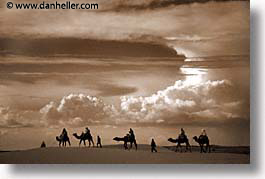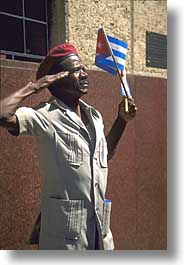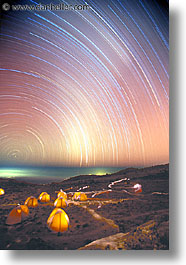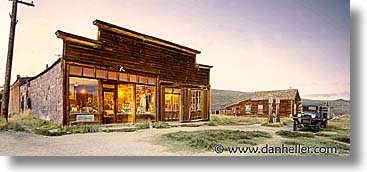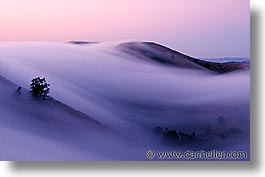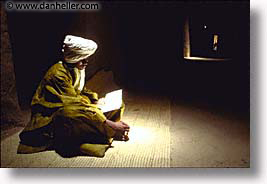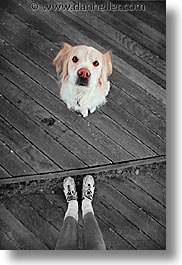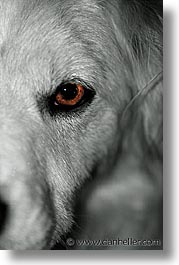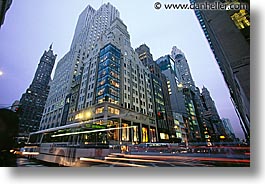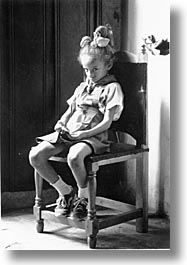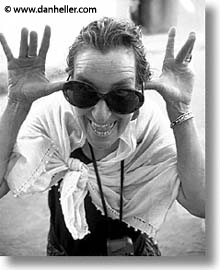|
Markers indicate locations for photos on this page.
Accuracy responsibility of Google Maps
Google Map Goes Here
If you see this text, the map is still loading (or there's an error). |
This reminds me of the story where Ansel Adams was teaching a photo workshop in Yosemite National Park, and a student raised his hand. "What was the aperture setting and shutter speed on that photo?", asked the student as he pointed to a classic black and white print of Half Dome. Ansel replied without batting an eyelash, "f64 at 2 seconds." This prompted another student to do the same, "And what about that photo?" Again, he quickly replied, "f32 at 1 second." This goes on and on, while the students scribble in their notebooks the technical information they were told, as if the magician were giving away secrets. Finally, someone
A lot of beginners mistakenly believe that knowing what the camera settings
were for any given picture will help them learn something, or give them some
guidelines or insights on how the photographic process works. The problem is
photography is not a paint-by-numbers game, where you memorize
aperture/exposure values, and apply them under what appear to be similar
conditions. Amateurs all too often feel they will get a "sense" for
how pictures are taken, which may sink in over time, and there are plenty
of pro photographers that write books to give these people such quick
and easy answers to these questions. But one cannot possibly learn
anything using this method. In fact, it does more harm than good by
perpetuating the illusion of knowledge, thereby delaying when the real
learning process begins.
To begin, I found a book called, Techniques of Natural Light
Photography, by Jim Zuckerman. It's a great looking book with great
images, and I was particularly excited to see that all the technical
information for each photo was given in detail: he had a great picture
of an elephant silhouette underneath a sunset sky in Africa, and his
camera settings were f5.6, a shutter speed of 1/125 of a second, and was
using Fuji Velvia film. You can imagine how emboldened I felt when I
went out to shoot a beautiful sunset where I live, feeling like I was
going to capture an amazing postcard photo. But when I got there, it
dawned on me: I still had no idea what I was doing. Just because Jim
Zuckerman took a shot at f5.6 at 1/125 of a second, doesn't mean the
same settings will work for my shot. I was lost. It occurred to me
that I've been asking the wrong questions. Instead of asking what his
camera settings were for any given shot, what I really wanted to know
was: How did he know to set them that way?! That's the stuff I needed
to learn, and this book hardly approaches that subject.
I rented a basic studio lighting output (worth about $1000), and bought a book on how to photograph using studio lighting. It was great: it had all sorts of pictures and diagrams and technical settings on light values and camera settings, all showing exactly how each and every spectacular photograph was shot. Inspired, I went home and set up a scene, and then tried to look for a similar setup in the book so I could try it as well. But, then the epiphany hit me again: I had no similar scenes in my house that I could copy as a test. All of his examples involved quite a bit more stuff, not to mention location access, than what most people have access to. I'd have to go to the Plaza Hotel in New York City during dinner hour, bring $20,000 worth of lighting equipment with me, bribe the Maitre D' to let me bother the guests, and then pay everyone in the room a modelling fee so I could photograph them. A little unrealistic, to say the least.
My own experimentation eventually allowed me to figure out everything I needed to know. And better yet, I learned how to do it on my own, which is pivotal here: because what you learn on your own you never forget. I can now look at a photo and determine, from experience, where the lighting was positioned, where it was deficient, where it's too strong, and even estimates on aperture settings based on the visible depth of field. Ironically, all these books had to do was explain how to go about figuring it out. But, instructing and teaching are two different things, and most "instructors" don't see the difference. They just instruct, which is not going to impart concepts that help you learn. And therein lies a weird moral of the story: introductory how-to photo books are a dime a dozen, and it's really hard to find the gems from the coal. Use them for basic technical facts, but realize that experience through trial and error (despite your best attempts at copying what the book tells you to do) will be your best teacher. As Woody Allen said, "If you're not failing every now and again, it's a sign you're not doing anything very innovative."
The process of learning good technique requires three steps, each of
which is equally important, similar to that of a three-legged stool:
all legs are necessary for the stool to stand, for without any one of
them, it will fall.
While experimentation is key to improvement, it's critique that enables this improvement to take hold. It also takes the longest to develop and fine-tune. I've known many people who are excellent technicians and shoot a lot, but their pictures aren't that inspiring because they just don't have a vision for what they want to shoot. This vision is necessary in order to know how to critique your work: it's knowing what to look for. Now, don't confuse "vision" and "critique" with taste. They have nothing to do with one another. There is no right or wrong in taste; it is what differentiates us from each other. What appeals to you and why is what makes you you. If you like minimalist, out-of-focus black and white abstracts of globs of light on paper, that's perfectly fine. It still takes time to develop that into something that has consistency and other aspects that appeal to the human eye. Not everyone may share your taste or style, but don't fall into the trap of thinking that you're "good, but people just don't understand you." We're all influenced by others' works, and we mimic it to some degree or another. Another famous quote:
I got the point. In short, all my pictures gave that same sense: I looked around and just took pictures of stuff I saw. This is what I later called "inventory shots." That is, I took an inventory of everything I saw so I can show them to people and say, "see this beautiful church I saw in England!" And they can respond with, "Wow! And look at the interesting detail!" And you can say, "Why don't we build those things here!?" And you can go on and on, but you're not really looking at—or appreciating—photography. You're looking at pictures. There's nothing necessarily wrong with this, but if you want to get entrenched in taking better pictures, you need to develop an awareness for other aspects beyond just the record of what you saw. Here are some ways to get started:
A fantastic resource is http://www.photozone.de/Technique. I should write up a similar list of rules, but this page is so good, I don't need to bother.
After seeing something that interests you and you finished with your
initial inventory shots (I still do it—we all do), explore the subject
further and start taking different perspectives. You should probably
shoot about 5-10x more picures than you usually would... or more than
a tourist would. Edit away those similar-but-not-identical pictures to
find the best ones.
Get really low (shoot from the floor if you can). Horizontal, or looking up, etc... Similarly, find a higher place (a mezzanine if possible, a second floor, the top of a building, etc.). Sometimes, just holding your camera as high as you can and pointing down yields fun results. Experiment.
Shoot the entire subject with one lens, then do it again with another. Use the wide angles. (My favorite fun lens is the fisheye.) Also, zoom in close and get the intimate details. If you don't have a range of lenses, use the extremes in your point-n-shoot's zoom lens to try the same thing. At the end of the day, you really need to develop an eye for the kinds of things that appeal to you, and then turn up the intent to "11." Push your own limits. You know you're improving when other people no longer want to travel with you because you spend too much time shooting.
For more discussion like this, see Photographing Native Peoples in Foreign Countries.
If you're looking to improve your photography skills in a more regimented, disciplined and focused environment, taking classes or photo workshops are tons of fun, and quite valuable to anyone, including pros. I even like going to workshops now and then, although I'm now teaching more of them than I am attending them. Workshops are fun, you're around other photographers, your time and attention are focused on the task and the subject. You don't wander. This is the best environment for learning. Photo workshops are a dime a dozen. Choose one based on the location or subject matter. I've never chosen a workshop because of the teacher, because while someone may be a good photographer, they may be an awful teacher. One doesn't necessarily have anything to do with the other.
I finally realized I'd outgrown my teacher when it dawned on me that he was shooting the same thing he always shoots, which also was identical to his entire portfolio. Sure, his photos are great looking, but he could do nothing else. Someone had undoubtedly taught him the mechanics of shooting certain pictures (where to stand, what film to use, how to set the camera settings) and he's been doing it ever since. He never evolved, which also explains why some of his technical information is incorrect. He never really understood it himself; he never questioned it, and just parrots it to the next student in the line.
There's still something to be learned from anyone.
Like many people in life, you don't learn from only positive
influences; some people can be perfectly good role models when used as
counter-examples to how you don't want to be. Whether those are
your enemies, teachers, parents, or school friends, you learn through
all sorts of experiences. My goal is to help people understand at
least my approach, so you can say to someone one day: "Yeah,
I learned photography from this guy on the web. Talks a lot. Now I
realize he's an idiot, but that's how I got started!"
Click to recommend this page: |
|
